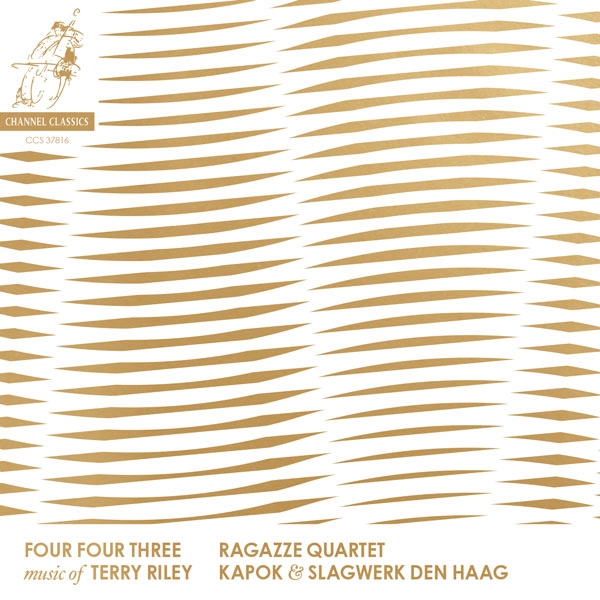| Columns Retired Columns & Blogs |
This is new to me and I love it. Sounds just amazing with good headphones. Almost disorienting. Thanks...

At a time when traditional tonality was out, and the far more intellectual and non-romantic pursuits of the 12-tone school of music reigned, Riley composed his seminal, so-called "minimalist" masterpiece. He based In C on 53 short, numbered musical phrases. Each phrase varied in length from a half beat to 32 beats, and could be repeated as long as each player desired.
Those players, it should be noted, have varied over the years from 7 to multiple hundreds, with no two performances alike. The present recording, for example, includes 11 performers creating wild instrumental combinations that have likely never been heard before. But, even more important than In C's chance aspects, and its unwavering adherence to the most basic key on the planet, is the fact that it engaged the senses with a rhythmic viscerality and kaleidoscopic range of colors and patterns most commonly associated with jazz, the music of the Far East, and the psychedelic experiences of an emerging counter-culture.
The initial recording of In C, released by CBS Records in 1968, caused a sensation. No less impactful was CBS's A Rainbow In Curved Air (1969), which came out the year before Riley became a disciple of North Indian raga vocalist, Pandit Pran Nath. Not only did Riley influence the trajectory of classical composers Philip Glass, Steve Reich, and John Adams, but he also had a profound impact on the music of The Who, The Soft Machine, Tangerine Dream, and Curved Air.
In C took people to places they never thought possible. 48 years after its first recording, it is still blowing people's minds.
Riley also had a profound influence on the evolution of David Harrington and the Kronos Quartet. Harrington, who founded Kronos in order to record George Crumb's Black Angels (1970), a piece inspired by the Vietnam War, met Riley at Mills College while Riley was teaching there and Kronos was in residence. The first piece Riley wrote for Kronos was Sunrise of the Planetary Dream Collector (1980). 12 more string quartets, two quintets (one that was also written for pipa master Wu Han), a concerto, and a NASA-commissioned multi-media piece followed.
Riley's early influences included La Monte Young, dancer Anna Halprin, and trumpeter Chet Baker, with whom he collaborated. It was through my 35-years of whistling with Halprin in rituals that I first met Riley. At the close of one of her famed AIDS rituals, Halprin asked me cap Riley's score with my improvised whistling.
The sounds on this new recording often border on the hilarious. Sometimes, they're unbelievably delicate and simply adorable. Their decay time is also extraordinarily realistic. Don't set the volume too high in the beginning, because the performance includes some fantastic peaks where everyone goes at it at once and it's all you can do to hold on for dear life. In fact, if you follow Riley's example and alter your consciousness, you may not wish to hold on at all.
Those who believe that, because I frequently assert that the sonic differences between power cables are easily audible, my head must have been spinning in another dimension long before I ever heard this recording, are hereby invited to get out of their heads entirely and indulge themselves in the magic that recording engineer Jared Sacks helps create on Four Four Three. It is a fabulous listening experience. If your toes are not tapping by the end of In C, it may be time to consider psychedelic therapy as an alternative to self-incarceration.

This is new to me and I love it. Sounds just amazing with good headphones. Almost disorienting. Thanks...

It's even more fascinating in DSD Surround Sound than in DSD Stereo.
The album was recorded by Jared Sacks of Channel Classics with the musicians in a circle and the recording session microphones in the middle with the Surround Sound edition recreating the performance in a truly immersive sound field. The music is mind bending and full of unexpected Surround Sound moments. Highly Recommended.
Sacks describes the recording process on a blog post at http://blog.nativedsd.com/full-multichannel-dsd/

... a tour with his son, Gyan. Gyan is an awesome musician and a great guy.

For those interested in Channel Classics and their top-rate recording technique, try the instrumental recordings of harpist Lavinia Meijer. She has released two recordings on Channel Classics. These two recordings are among the finest that I have ever purchased.
I hope we can get some BIS, Berlin Classics, Capriccio and Pentatone Classics reviews to complement the well-deserved recordings from Channel Classics in these pages.

after 48 years, not 38